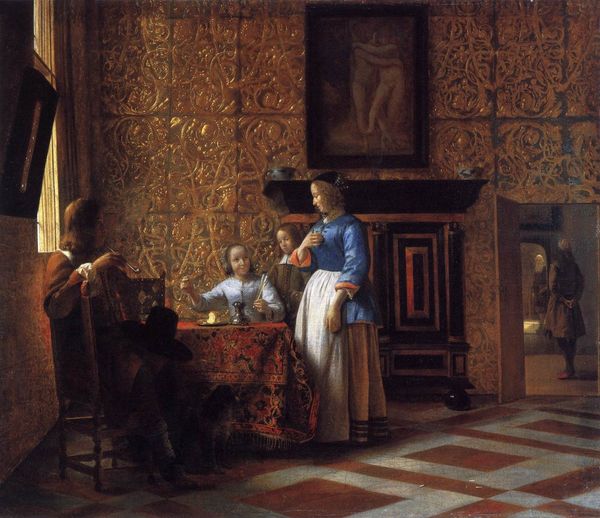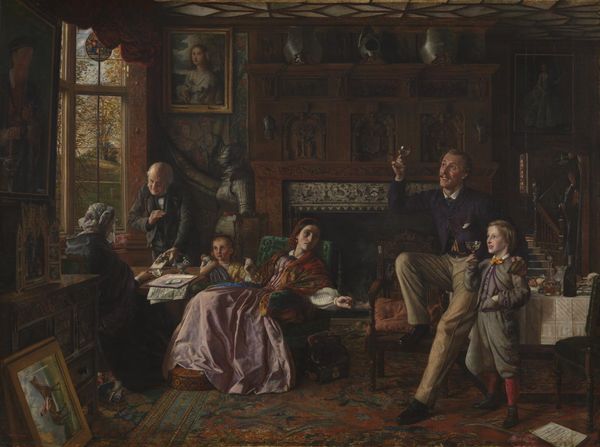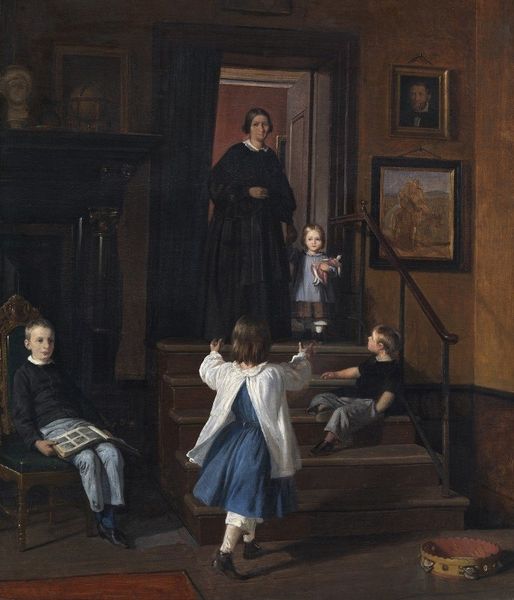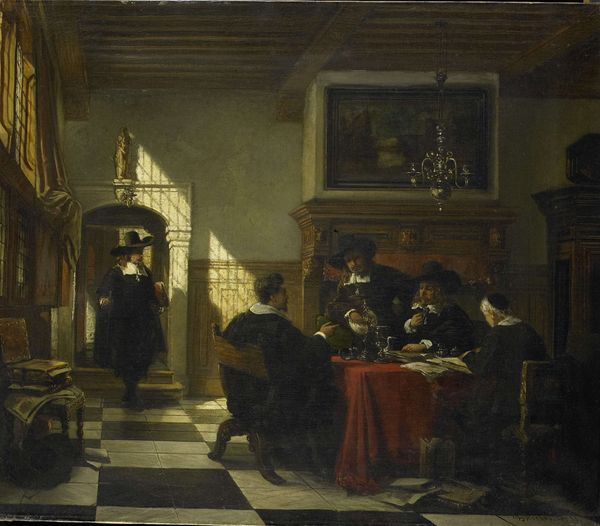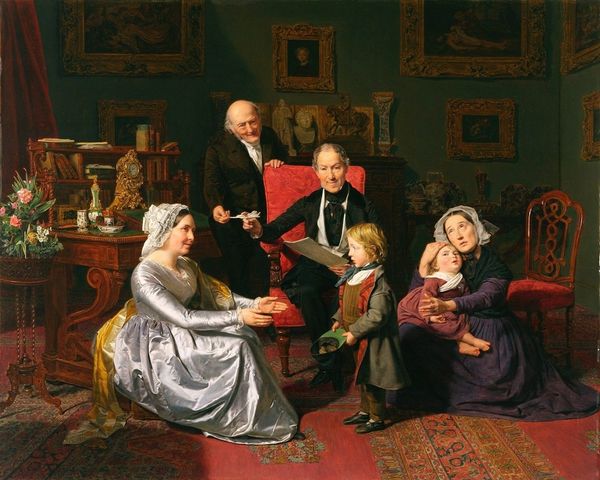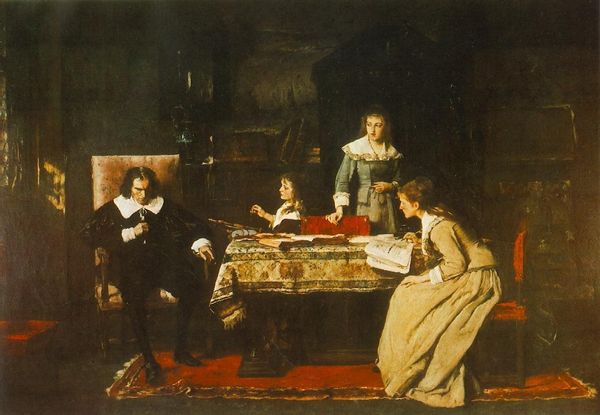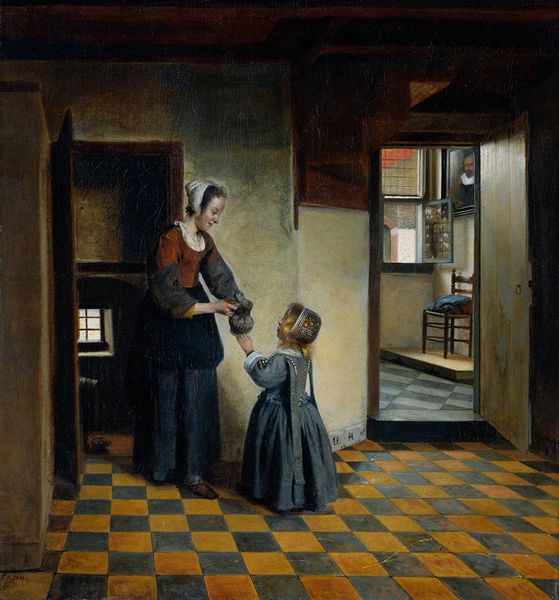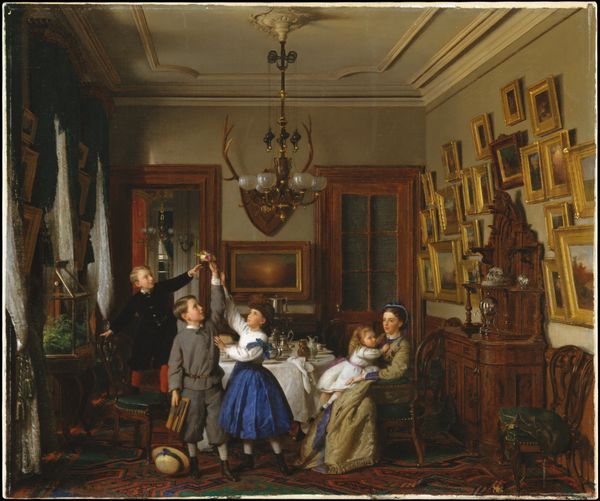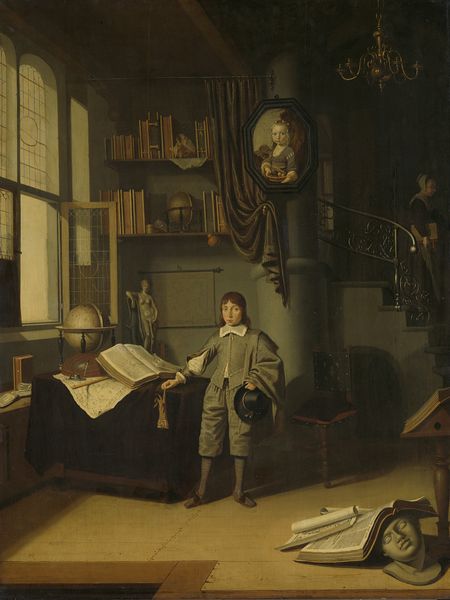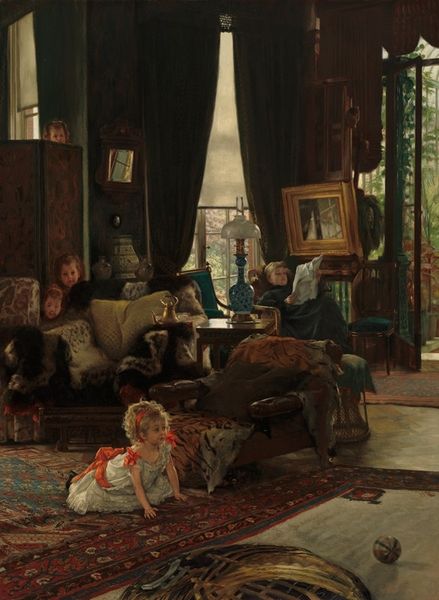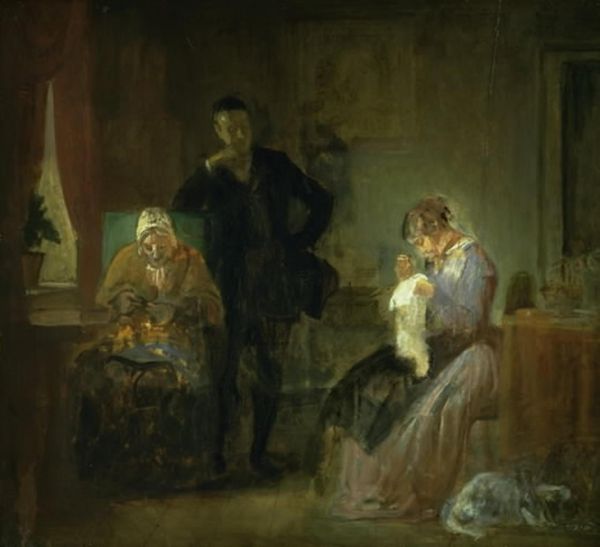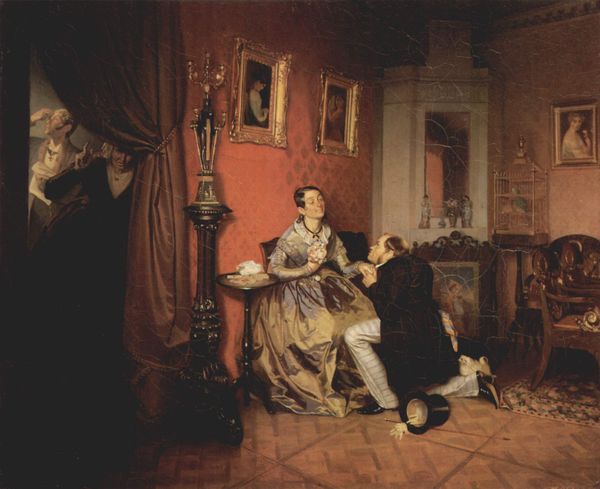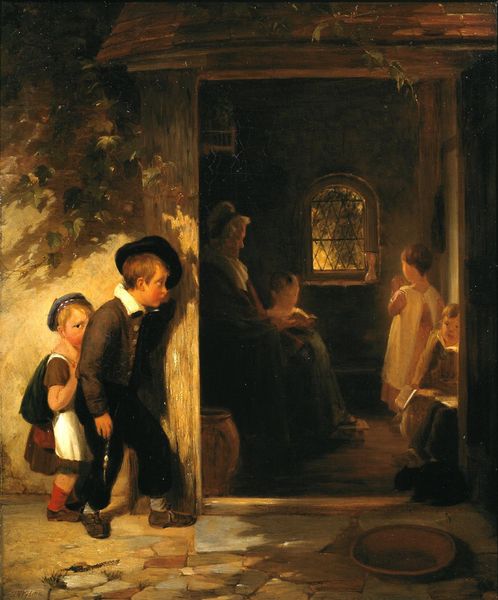
painting, oil-paint, impasto
#
portrait
#
figurative
#
painting
#
oil-paint
#
impasto
#
group-portraits
#
genre-painting
#
academic-art
#
realism
Copyright: Public Domain: Artvee
Curator: Eastman Johnson gives us a glimpse into a well-to-do household in his oil on canvas work "Christmas-Time, The Blodgett Family," painted in 1864. Editor: It feels intimate, despite the formality. I’m drawn to the warm, dark tones, particularly how they illuminate the central figures. The textures achieved with what appears to be impasto in areas – you can almost feel the fabric and wood grain. Curator: The scene really encapsulates a pivotal moment. 1864 puts this squarely in the Civil War era, and you can almost sense the tension just below the surface of this bourgeois celebration. It depicts the Blodgett family, prominent benefactors of the Union cause. Think about what Christmas meant during that period—a yearning for normalcy amidst great social upheaval. Editor: So, Johnson consciously chose to portray this domestic tranquility against that backdrop? It's striking how much detail is devoted to the making and decorating of this home and celebrating this holiday. The material presence is almost a statement in itself, and the texture contributes to the effect. It becomes clear in his work how labor and production created material comforts like carpets and clothing, and how it can become such a statement in a moment of social turmoil. Curator: Absolutely. Notice how the composition subtly reinforces societal roles. The father figure is separated slightly, standing near the fireplace. Mother is centered, almost enthroned amidst the children. Then we have the children around the holiday gifts themselves. Editor: And the role of art! We see the unfinished canvases propped casually by the mantle, family portraits above. Johnson highlights artistic production and consumption within a household of privilege. This feels like the museum positioning itself to the viewer, both physically in a home and culturally, too. Curator: Exactly. Consider the audience for a painting like this in 1864—primarily other wealthy families who would recognize and appreciate this image of comfortable domesticity and the implication of power that comes along with that life in a wartime environment. Editor: It prompts one to ask, how are these images shaped by institutions like the home and gallery, both literal and artistic? How can painting contribute to family values, national identity, or even social hierarchies? It goes beyond simply documenting a family’s Christmas; the act of choosing to represent it contributes something. Curator: A very relevant observation. I'm drawn to the story Johnson tells—it is more than just a portrait, it speaks to that historical moment, class dynamics and how these play out. Editor: For me, its emphasis on labor, materialism, consumption, and the hand of the artist opens discussions around the means and ethics of art-making.
Comments
No comments
Be the first to comment and join the conversation on the ultimate creative platform.
